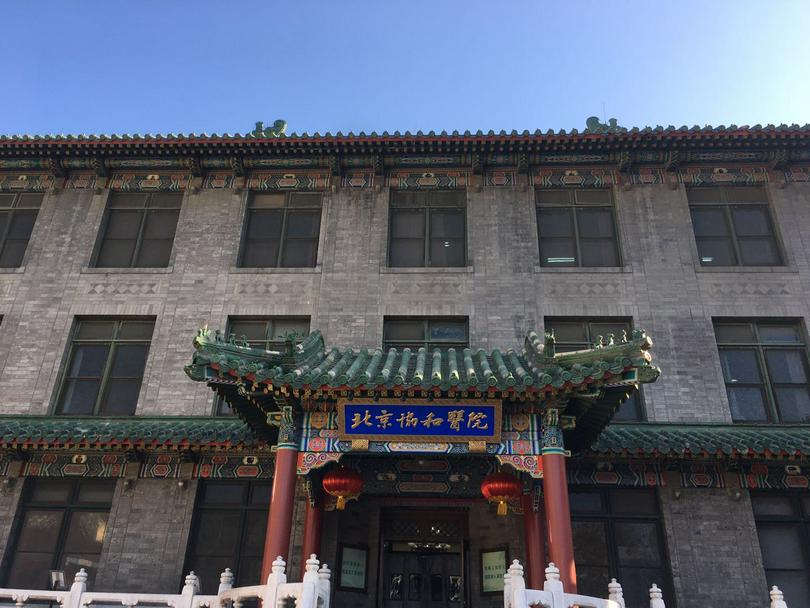Recently, a Chinese newspaper Southern Weekend issued stories on the four top hospitals in China that are battling the coronavirus pandemic. The artcle sad, "It is similar to what is commonly described in Chinese martial arts novels that the warriors from each school have their very own special way of treating critical patients."
On February 7, a news story entitled "Trump Card! Victory Belongs to China! - Four Top Hospitals Join Forces in Battle for Wuhan," broke the record for online hits. "Northern Union, southern Xiangya, eastern Cheeloo, and western Huaxi" represent the highest level of Chinese medicine. They were once known as the four "hundred-year-old shops" among China's medical education community, well-known hospitals since the 1930s. They were established by missionaries who introduced Western medicine in their treatment of Chinese patients.
Immediately after missionaries entered China, they began to practice medicine. The Jesuit priest Matteo Ricci pioneered the approach of joining missionary ministry and medical treatment. Protestant missionary Robert Morrison also opened a Western medical clinic in Macau, and the hospital established by the American missionary Peter Parker in Guangzhou was the earliest form of a modern facility established by missionaries. After this "evangelical hospitals" emerged in many parts of the country.
Today, the stories of church hospitals may still be mentioned from time to time. After all, they bear witness to the missionaries who actively served the community, saved lives and promoted public awareness of health. They did this in an environment where there was an absence of adequate medical care and medicine, and under the limited conditions of medical facilities. Stories about this time period include the four top hospitals in the early missionary history.
Peking Union Medical College Hospital
"The history of Peking Union Medical College Hospital comprises half of China's medical history." It is said that Peking Union Medical College Hospital is the last barrier between patients and death. On January 26 of this year, the first group of medical staff from Peking Union Medical College Hospital set off to support the people of Wuhan. This is the same hospital where the medical icon, Lin Chao-chin, was pioneer and founder of obstetrics and gynecology in China.
The first person to practice medicine in Beijing was William Lockhart from the London Mission Society. He established the Beijing Hospital of the London Missionary Society in Beijing in 1862. It was the first Western hospital in Beijing. In 1900, the hospital was destroyed during the Boxer Rebellion. Subsequently, a five-church association made up of groups like the London Missionary Society and the American Presbyterian Church set up the North China Church Association. They sent Dr. William Gemmell Cochran of the London Missionary Society to establish another hospital on the old site of the Beijing Hospital.
While in Beijing, Cochran gave medical treatment to the chief eunuch Li Lianying and through this learned to know and was acknowledged by the Empress Dowager Cixi. In 1904, the Empress Dowager took the lead in donating "500,000 grams of white silver to a fund for the establishing of the Peking Union Medical College." Many officials followed by making donations as well. The college was officially established in 1906 with donations from various parties and the support of the five churches of the North China Church Association.
In 1915, the China Medical Board in the United States acquired all of the assets of the Union Medical College for $200,000. The ownership of the school was transferred to the Rockefeller Foundation. The new school was named the "Beijing Union Medical College." A ground-breaking ceremony was held in September 1917.
The professors who taught at the Peking Union Medical College at the time were Ph.D. holders from prestigious American universities. In order to make it the strongest college in Asia, the medical college implemented a difficult step-by-step admission process. The students who were enrolled needed to study hard on a daily basis. Known as the "mother of all babies," Lin Chao-chin asked students to comply with the stipulation that "if a female medical student chooses a major such as internal or external medicine, obstetrics and gynecology, they are not to get married," but choose to remain single to ensure that they can give all of their energy and attention to their patients. Both Liang Qichao and Sun Yat-sen went to Beijing Peking Union Medical College Hospital for surgery; their files are still kept there.
In 1951, Peking Union Medical College Hospital began to transfer a large number of trained medical personnel to medical schools and hospitals throughout the country. In 2003, in the fight against SARS, the Hospital opened four infectious disease units and more than a thousand medical staff were at the front-line of treating patients. In order to develop the SARS vaccine, Union collected the only qualified SARS strain.
Xiangya Hospital, Hunan Province
Xiangya Hospital's official website reads: "At the beginning of the 20th century, Yale University alumni established the Yale-China Association to open an important chapter for medical schools in China. In 1906, Edward H. Hume, M.D. (1876-1957) was appointed to China by the Yale-China Association to create the Yale Hospital in Xipailou, Changsha. In 1914, the Hunan provincial government commissioned the Yuqun Society, in cooperation with the Yale-China Association, to establish the first Sino-American joint-venture higher medical education institution - Xiangya Medical College, Yale Hospital which was then renamed as Xiangya Hospital (Hsiangya Hospital)."
Edward H. Hume was a medical missionary from the Yale-China Association. In 1922, an educational mission from America came to China to do systematic research. The mission confirmed that Xiangya and Beijing Union Medical College were the best in China. Since then, "Xiangya in the South and Beijing Union in the north" are known worldwide. During the Anti-Japanese War, Xiangya Hospital opened its doors to save the dying and wounded and provided shelter for refugees. The Hospital was burned down by the Japanese army in 1942. After it was rebuilt in 1946, medical practice not only continued but services were expanded.
For nearly two decades, experts and medical care at Xiangya Hospital has been involved in the fight against SARS, influenza, Ebola and avian influenza. In February 2020, the hospital building was used as a quarantine ward for the prevention and control of a new type of coronavirus pneumonia. As early as January 21, Professor Wu Anhua of the hospital was a member of the first national team of experts to respond to the crisis in Hubei province. On January 27, five nursing professionals went to the Wuhan Jinyintan Hospital to support the new coronavirus infection prevention work. On February 7, 130 brave staff members from Changsha assisted in the Wuhan Union West Hospital intensive care unit. Six medical staff members accompanied the medical team from Hunan Province to Huanggang to fight the new coronavirus.
Qilu (Cheeloo) Hospital, Shandong University
On February 7 of this year, Li Yu, the captain of the fourth medical unit of Qilu Hospital, led 130 team members to the Wuhan Tianhe Airport.
In modern Chinese history, Qilu Hospital, formerly known as the American-Presbyterian Hospital, was founded in 1890 by the American missionary couple James Boyd Neal and Elizabeth Simonton Neal. They were assigned to Jinan by the North American Presbyterian Church after the signing of the Treaty of Tianjin and the opening of dozens of trade ports in Dengzhou, Shandong Province. There they bought a plot of land to create the American Presbyterian Hospital.
The hospital gradually developed into a complete medical facility with internal medicine, surgery, gynecology, pediatrics, ophthalmology and otolaryngology. It was Qilu's first Western medical hospital. In 1917, the hospital completed several new school buildings. The church-run Guangwen College, the Peizhen Theological Seminary and the Normal School merged with the Shandong Christian University Medical Department and the Guangzhi Institute to formally establish Qilu University. Qilu University and the Shandong Christian University Medical Department were joined by faculty and students from the Beijing Union Medical College to form the Medical School of Qilu University. In 1933, the construction of a new hospital increased the number of personnel and improved the medical facilities. In October 2000, Shandong University, Shandong Medical University and Shangong University merged to form a new Shandong University. The hospital was officially renamed as Qilu Hospital of Shandong University.
After the Wenchuan earthquake in 2008, Qilu Hospital set up three groups of medical rescue teams with a total of thirteen people to assist with the Sichuan earthquake relief.
West China Hospital, Sichuan University
The West China Hospital of Sichuan University has its origins when five church organizations from the United States, the United Kingdom, and Canada founded the private West China Union University in Chengdu in 1910. In September 2000, China West Medical University merged with Sichuan University and changed its name to West China Medical Center, Sichuan University. It is now China's largest comprehensive medical university.
The West China Hospital grew out of the Renji Hospital and Cunren Hospital which were founded in Chengdu by churches from the United States, Canada, the United Kingdom and other countries in 1892. The West China Union University's medical college began operations in 1914, following the model of medical education in the West.
In early 2019, the China West City Daily reported the publication of the "China West Culture Series", a project of the National Publishing Fund. The project collected and collated rare historical materials such as letters and documents that were in national libraries in Europe and the United States and in the hands of the founders of China West Union University. They included interviews with the founders and descendants who were still alive to witness the century-old history.
The series includes three volumes of Letters, the Maple West China Dam, Huaxi in the Purple Cloud, which shows the culture of the school at different historical stages. Included is a collection of letters about the founders of China West Union University, revealing the arduous task faced by the foreign missionaries who established and ran the university from 1911 to 1950. The collection details the difficulty in establishing a medical curriculum, the social environment of that time, and an objective description of how people lived. A documentary piece describes how Canadian missionaries at West China Union University spread modern medical knowledge.
In the preface to the book, Huaxi in the Purple Cloud, the author writes: "Medical schools have always been vital institutions that have far-reaching effects in their service to the public. What sets our academy apart is that our teachers are missionaries and come from different Christian schools and from five different mission societies.... Instead of focusing on the differences of nationality, geography or individual opinion, we have worked together to overcome unimaginable difficulties. In the third chapter, the author introduces "the historical background of medical mission in China."
- Translated by Charlie Li












